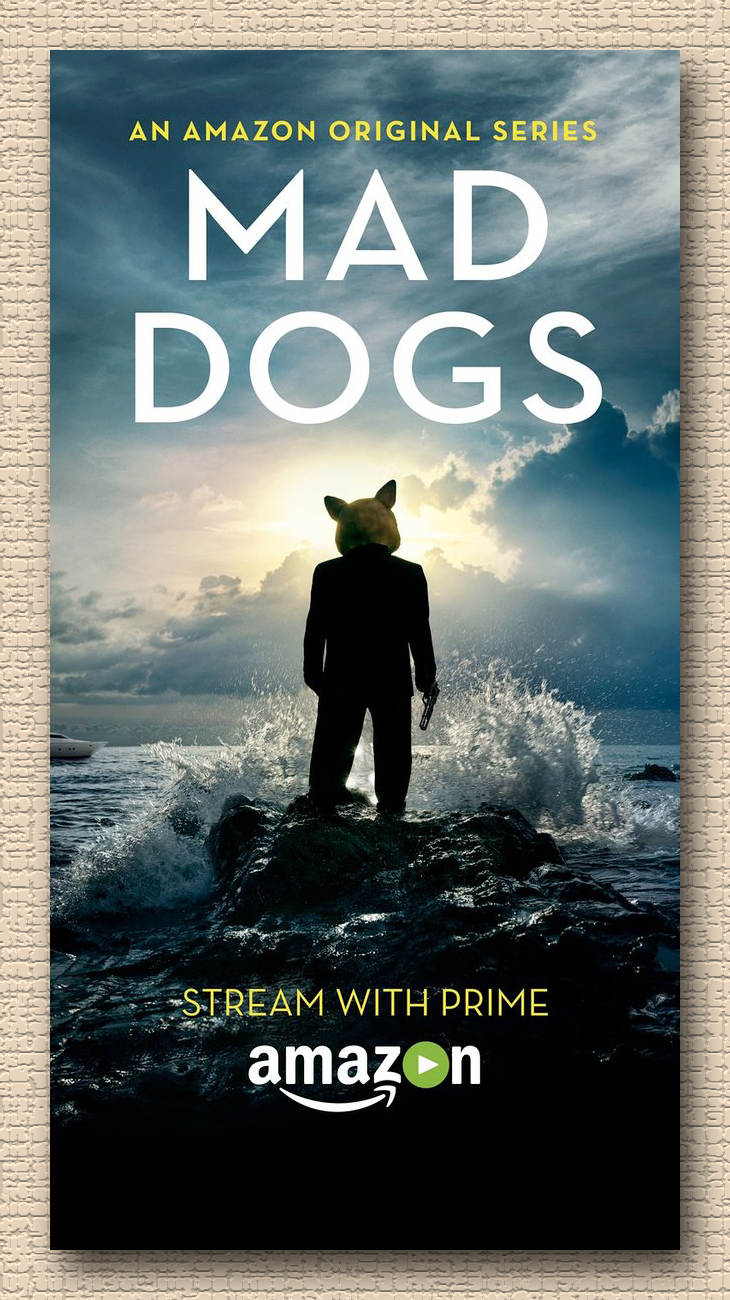by Tosh McIntosh
“When a group of 40-something friends gather in Belize to celebrate the early retirement of an old friend, a series of wild events unfold, exposing dark secrets, deception and murder.”
That, fellow NIPers, is a premise. And in the case of Season 1 of “Mad Dogs” on Amazon Prime, it was more than sufficient last evening to lure me into watching the first two episodes, after which I can report that I’m not only hooked, but also fascinated with the way in which the story unfolds.
This is not to say that I think any individual NIP member will enjoy it as much as I have so far. But just like Roundtable submissions, much can be learned from examining the underlying structure. Before I do that, however, let’s acknowledge existence of the never-ending dichotomy of opinion on the topic of How We Write.
At one end of the spectrum, we have those who feel that it’s best to let a story flow with little or no advance preparation. I’ve heard this approach described as indicative of the author wanting to avoid cookie-cutter, formulaic, by-the-numbers stories.
At the other end of the scale we find me, a staunch proponent of the value gained by mastering the structural elements of modern fiction as presented in three primary source references: The Hero with a Thousand Faces by Joseph Campbell; The Hero’s Journey by Christopher Vogler; and Anatomy of Story by John Truby.
During more than a decade of regular NIP attendance, I’ve concluded that the vast majority of story failures, as defined by me, of course, derive from the author’s denial that these source references have anything of value to offer. When asked to explain, the author most often expresses the opinion that trying to structure stories in this way fails to tap into the author’s true creative storytelling self, like wearing a straightjacket while riding in a train on a predetermined length of track.
As described in a post titled “The Bungalow Analogy” on my personal blog, I offer an alternative view that knowledge of structure creates the freedom to let the story flow in a way that taps into the best of both worlds. And while that may on the surface appear contradictory, I submit that it highlights the major stumbling block for writers who reject the notion that a knowledge of structure is of benefit.
Many writers I’ve met over the years appear to think that the three authors mentioned above effectively created that structural straightjacket on their own, rather than what they actually accomplished, which was to identify the most common elements that form the foundation of stories that over the course of literary history have engaged readers, hauled them into the fictive dream through the willing suspension of disbelief, and never let go.
The bottom line for me has always been something like, “Why not master classic story structure, then fine-tune it with your own unique embellishments?”
All of this said, I freely acknowledge the existence of writers who have in the past, and will in the future, pen marvelous stories from their personal “white-hot center” (á la Robert Olen Butler). But for most the rest of us, let’s take a look at why “Mad Dogs” works so well. And don’t worry. There are no spoilers here.
Four friends join a fifth at his beachside estate in Belize to celebrate his early retirement. We see them as a group having a typical south-of-the-border, booze-drenched reunion the first evening, which ends the next morning with massive hangovers.
The first indicators of something going on under the surface begin to burble up through the actions of the estate owner as he appears to be handling the details of some mysterious business deal, along with his dialogue as he makes observations about each of his four friends. Through these exchanges we learn key elements of each friend’s ordinary world back in the States, and it becomes apparent that this invitation is leading to an inciting event that will impact each of the friends differently as it forces them to react as a group.
And does it ever. In the two episodes I’ve watched, the series of escalating complications for the group of four is a classic example of putting your hero(s) up a tree and throwing rocks at them.
From a personal perspective and in relation to the kinds of stories I find entertaining, “Mad Dogs” has me eagerly looking forward to Episode 3. If you elect to check it out, it may do far less than that for you. But if you treat it as an opportunity to see excellent (my descriptor, obviously) story structure in action, give it a try.

